This article was medically reviewed by Luba Lee, FNP-BC, MS. Luba Lee, FNP-BC is a Board-Certified Family Nurse Practitioner (FNP) and educator in Tennessee with over a decade of clinical experience. Luba has certifications in Pediatric Advanced Life Support (PALS), Emergency Medicine, Advanced Cardiac Life Support (ACLS), Team Building, and Critical Care Nursing. She received her Master of Science in Nursing (MSN) from the University of Tennessee in 2006.
This article has been viewed 20,133 times.
Neck muscle spasms are painful, sudden, and involuntary contractions which most often strike the muscles on the back and sides of your neck. During and after these contractions, your neck will feel knotted and stiff. While spasms are not usually serious, they are unpredictable and can be painful. The pain is often caused by strained neck muscles, poor posture, and worn joints.[1] Fortunately, it’s relatively easy to reduce the frequency of neck muscle spasms that you experience. Most neck-spasm pain can be managed with pain-relief and anti-inflammatory meds, stretches, and massages.
Steps
Stopping Neck Muscle Spasms with Medicine
-
1Take Ibuprofen or another over-the-counter pain-relief medication. The fastest way to rapidly relieve your neck spasm (and the accompanying pain) is to take a couple of OTC painkillers. Carefully follow the instructions on the medication packaging. If you’re an adult, take 2 pills every 4-6 hours. Unlike other OTC pain-relief meds, Ibuprofen also reduces swelling, which will further decrease the pain from your neck spasm and let your muscles relax.[2]
- While meds containing acetaminophen (e.g., Tylenol) will decrease pain, they will have no effect on swelling.
-
2Use a muscle relaxant if pain continues. If the occasional use of an OTC pain-relief medication doesn’t stop the neck spasms, take an OTC muscle relaxant. While these medications will not stop pain directly, they will relax your neck muscles. This will reduce the spasms and pain over time.[3]
- OTC muscle relaxers are available at large pharmacies, drug stores, and supermarkets. Common brands include Lorzone, Flexeril, Flexall, and Robaxin.
- Talk with your doctor to make sure that you can combine your OTC pain medication and muscle relaxant.
Advertisement -
3Ask your doctor about a steroid injection if OTC meds aren’t effective. If neither pain-relief meds nor muscle relaxants stop the spasm pain, it’s time to schedule an appointment with your general practitioner. Describe your symptoms and what you’ve done to decrease them. Ask if an injection could help. Doctors can inject steroids directly into your neck muscle(s) to decrease spasms.[4]
- Your doctor may also recommend injecting an anesthetic into your neck muscles, instead of a steroid.
Loosening Muscles to Treat Neck Spasms
-
1Perform basic neck stretches to reduce spasms and pain. Stretching your neck when you’re in pain will help reduce neck spasms. Place your right hand on the top of your head, and pull your head down and right towards your chest. You’ll feel the muscle on the left-rear of your neck stretch. Then, repeat on the left side, to stretch the muscle on the right-rear of your neck. Perform the exercise twice more on each side.[5]
- Muscle stretches will loosen up your neck muscles and can help prevent spasms from recurring.
-
2Massage your neck muscles or ask a friend for help. If you’re massaging yourself, apply firm pressure to your neck muscles using the fingertips on both hands. Move your fingertips in small circles, maintaining constant pressure downward into your muscles. If a partner or friend is massaging your neck, ask them to massage your neck muscles using the same technique.[6]
- You could also get a professional massage to reduce neck-spasm pain. Tell the massage therapist that you’d like them to focus on your neck.
-
3Apply a hot or cold compress to your neck muscles for 20 minutes at a time. A hot compress helps relax muscles and increase circulation. The cold will help reduce inflammation in your neck muscles, and can also help numb the pain from muscle spasms. Hold an ice pack directly against your neck muscles during or after a muscle spasm. Remove after 20 minutes. You can re-apply the ice pack one every 3-4 hours.[7]
- If you don’t have an ice pack, wet a washcloth in cool water and fill the cloth with 6-8 ice cubes. This will work as a makeshift ice pack.
- Wrap a hot compress in a thin towel or washcloth so you don’t burn yourself.
-
4Ask your doctor about seeing a physical therapist. If your muscle-spasm pain persists even after you’ve completed various personal stretches, more rigorous therapy may be necessary. Make an appointment to see your doctor, and ask if physical therapy would be a helpful course of action. A therapist can help you strengthen your neck muscles and reduce pain from spasms.[8]
- You’ll need to contact your health-insurance provider to find an in-network physical therapist.
- Or, ask your doctor for their recommendation (or referral, if needed) to a qualified physical therapist.
Preventing Further Neck Spasms
-
1Stand upright with good posture. Neck spasms—and neck pain in general—can be a result of standing with poor posture.[9] Stand perpendicular to a mirror and look at your posture. If your shoulders are humped, your neck is bent, and your spine curves at an angle, you likely have poor posture. Try straightening your spine and holding back your shoulders to improve posture.
- While this isn’t an instant fix for neck spasms, it will decrease their severity and frequency over time.
-
2Sit with good posture at your desk and in your car. If you work at a desk or have a long commute, your sitting posture is important. When you sit, your spine should be as straight as possible. Try to sit with your shoulders aligned vertically over your hips. Keep your head balanced over your spine, not hanging or slouching forwards.[10]
- It will also help reduce neck spasms if you move your head and neck around from time to time. Avoid sitting with your head in the same position for hours on end.
-
3Talk to a therapist if your neck pain may be caused by emotional issues. In addition to its many physical causes, neck pain can be caused by depression or stress. If you experience frequent stress in your work or personal life, or experience symptoms associated with depression, see a counselor or therapist. Describe your neck spasms and any other relevant symptoms.
- Ask your counselor for stress management techniques, like exercising and getting more sleep.
References
- ↑ https://www.aans.org/en/Patients/Neurosurgical-Conditions-and-Treatments/Neck-Pain
- ↑ https://medlineplus.gov/ency/patientinstructions/000802.htm
- ↑ https://www.aafp.org/pubs/afp/issues/2008/0801/p365.html
- ↑ https://www.aans.org/en/Patients/Neurosurgical-Conditions-and-Treatments/Neck-Pain
- ↑ https://medlineplus.gov/ency/patientinstructions/000802.htm
- ↑ https://medlineplus.gov/ency/patientinstructions/000802.htm
- ↑ https://my.clevelandclinic.org/health/diseases/15466-muscle-spasms/management-and-treatment
- ↑ https://medlineplus.gov/ency/patientinstructions/000802.htm
- ↑ https://www.nhs.uk/conditions/neck-pain-and-stiff-neck/
About This Article
To relieve muscle spasms in your neck, apply an ice pack directly to your neck for 20 minutes, then re-apply it once every 3-4 hours. Alternatively, stretch your neck muscles by placing your hand on the top of your head and pulling it down towards the right side of your chest. Then, repeat on the other side by pulling your head down towards the left side of your chest. You can also try massaging your neck by moving your fingertips in small circles as you apply constant downward pressure into your muscles. For more information from our Medical co-author, including how to treat your muscle spasms with medication, read on!

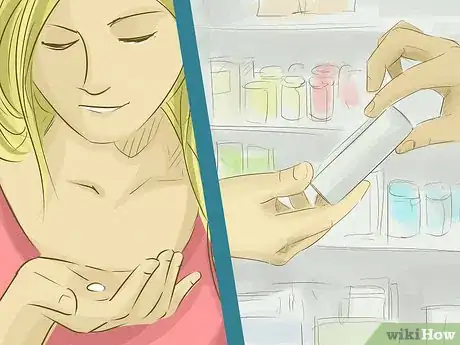
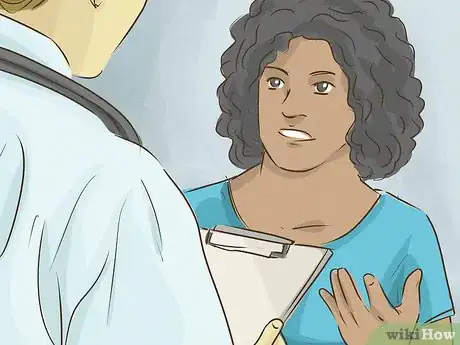
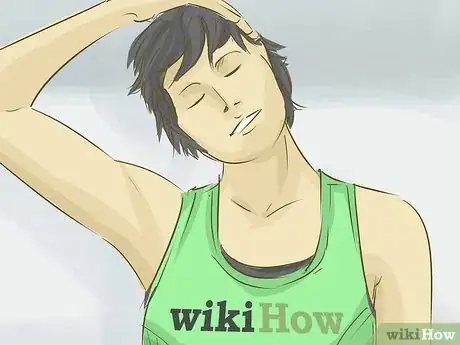
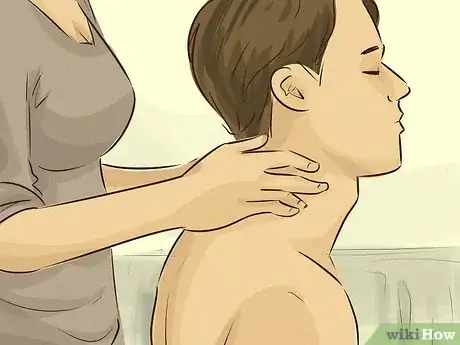
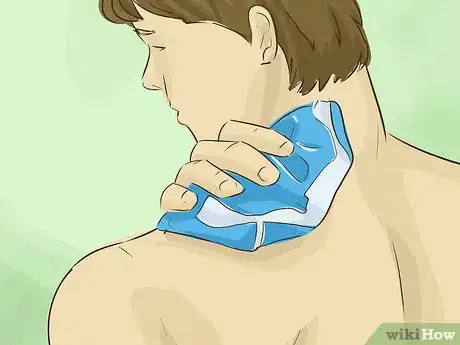
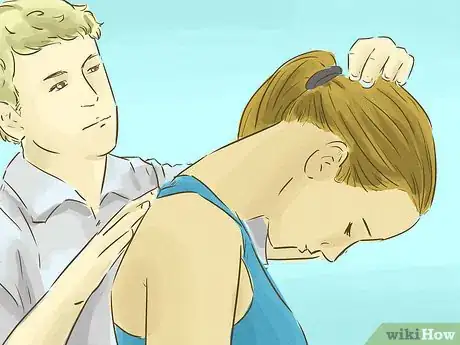
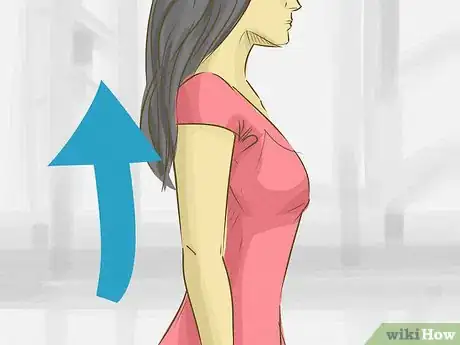
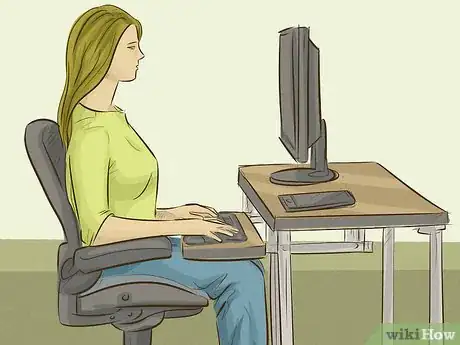
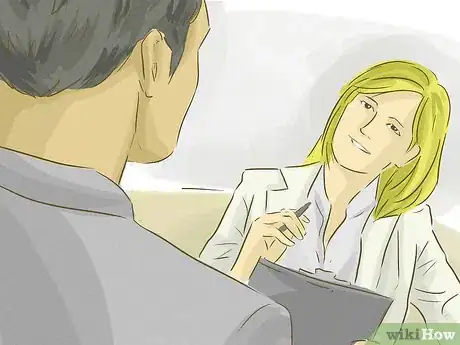
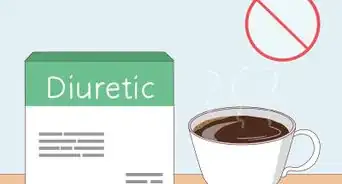
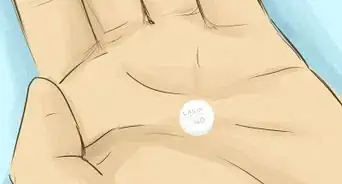
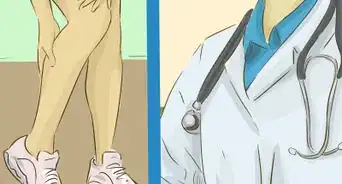
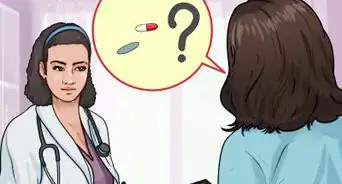
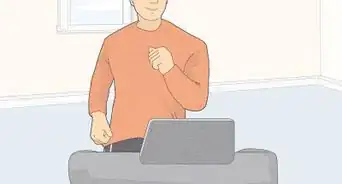
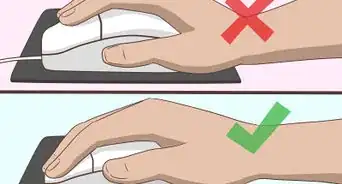
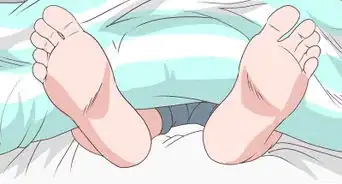
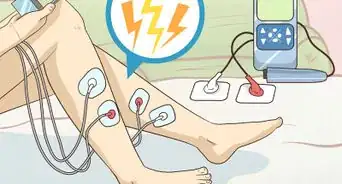
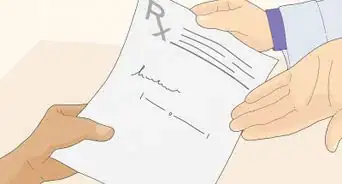

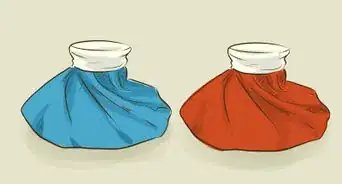







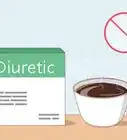
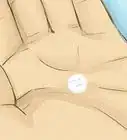
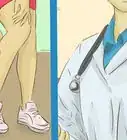
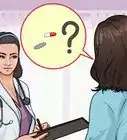



































Medical Disclaimer
The content of this article is not intended to be a substitute for professional medical advice, examination, diagnosis, or treatment. You should always contact your doctor or other qualified healthcare professional before starting, changing, or stopping any kind of health treatment.
Read More...